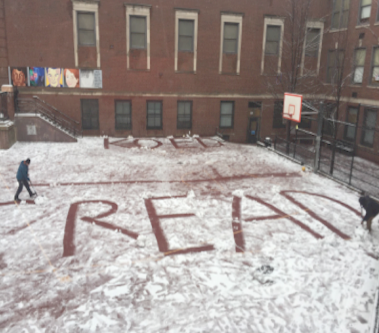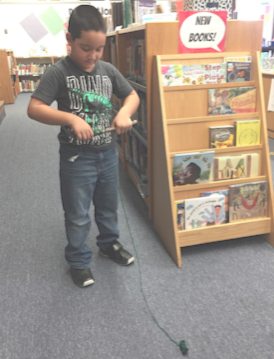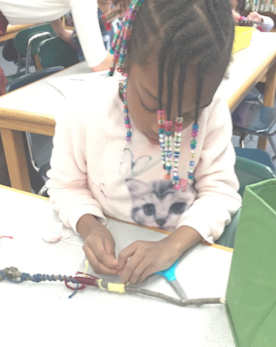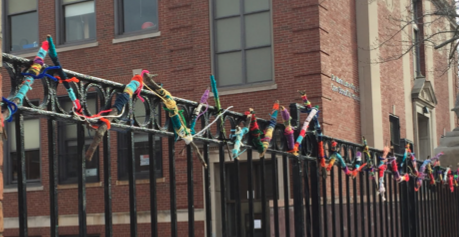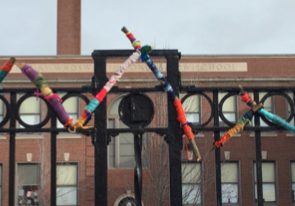Children who have experienced trauma and toxic stress have trouble stringing together events into a narrative. Often, their memories are fragmented and lack logic, predictability, or sequence. This is a source of distress and leads to a lack of agency and puzzling behavior. Reading and acting out lots of sequential stories supports children as they learn to tell their own story, to reorganize their sense of self, and to imagine a hopeful future. Picture books, with their visual content, ground students when stress impairs access to language.
Community Art Creation
Creating together makes students feel that they are important and they belong. My current library doesn’t lend itself to a big mural or sculpture, but these constraints led me to think about how students can make a small part of a bigger whole. I wanted to go beyond drawing, which frustrates some, to a more tactile, process-oriented task. Creating with rough, natural sticks, winding yarn in repetitive motion, some students fell into a meditative rhythm, while others found the courage to talk with peers and adults while their hands and eyes were busy. Because they were small parts of an amorphous whole, students were able to make extra yarn sticks and keep them as “fidget tools.”
A Good Secret
The Art-Fence was a delicious secret between me and the 1st graders, as we slowly spun it together to reveal to the King Open community. It was a spontaneous idea, born of a storytime question: “Our recess yard is ugly. Can we knit it a sweater?” We brainstormed how to do it (I am ambitious, but was not going to teach 50 1st graders to knit). I told them they could of course tell their grown-ups at home - that no grown-up should ever make them keep a secret. Otherwise, we worked furtively through the winter days. It created a cozy safety in our library and was a favorite activity even after the fence was done. For students who hold onto “bad secrets,” this was a reorganizing frame: a secret gift we were creating together, for others.

